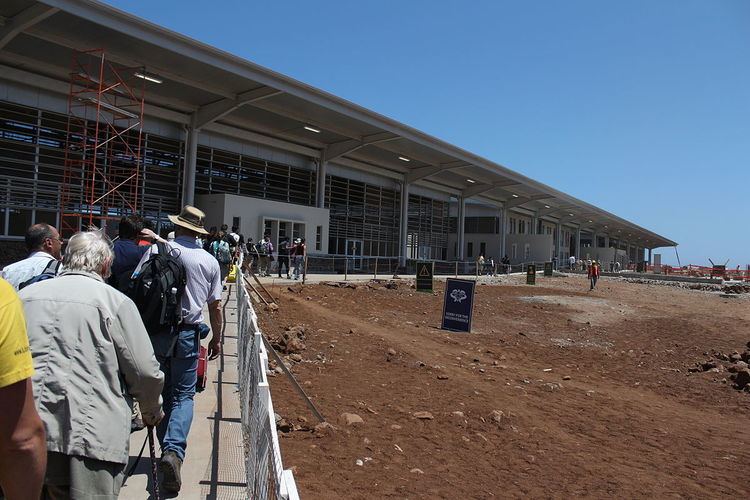Airport type Public / Military 14/32 2,401 7,876 Asphalt Elevation 63 m | Elevation AMSL 207 ft / 63 m 2,401 7,876 Code GPS Serves Baltra Island | |
 | ||
Address Baltra Airport Rd, Baltra, Ecuador Profiles | ||
Seymour Airport (IATA: GPS, ICAO: SEGS) is an airport serving the island of Baltra, one of the Galápagos Islands in Ecuador.
Contents
Seymour airport island of baltra gal pagos islands ecuador south america
Facilities
The airport became the world’s first “green” airport in December 2012.
The new terminal, which consists of recycled steel tubes taken from oil drilling operations in the Amazon, is spread over 6,000 square meters and required an investment of just over $24 million. The new complex will use clean, renewable technologies such as solar energy, wind farms, and seawater desalination, among other environmental innovations.
According to ECOGAL, the company which operates the terminal, the construction of the new airport took into account the surrounding environment and sought to make a minimal impact on the ecosystem. The project was announced in 2008, with construction commencing in 2012. The purpose of the redevelopment from the outset was to create the world’s first ecological airport. ECOGAL was awarded a 15-year concession to administer and operate the airport.
The airport resides at an elevation of 207 feet (63 m) above mean sea level. It has one runway designated 14/32 with an asphalt surface measuring 7,876 by 115 feet (2,401 m × 35 m).
History
During World War II, the airport (known as Seymour Island Airfield) was used by the United States Army Air Forces Sixth Air Force defending the South American coastline and the Panama Canal against Japanese submarines. The first American personnel arrived on 9 April 1942. Military flying units assigned to the airport were:
By 30 September 1945, most personnel were withdrawn and only a housekeeping staff remained. The military facility was inactivated on 30 April 1946, leaving a communications unit which inactivated on 29 February 1948. Today many of the former USAAF aircraft parking hardstands still exist, along with an unused NW/SE runway that was abandoned after the war, but remains in reasonable condition.
